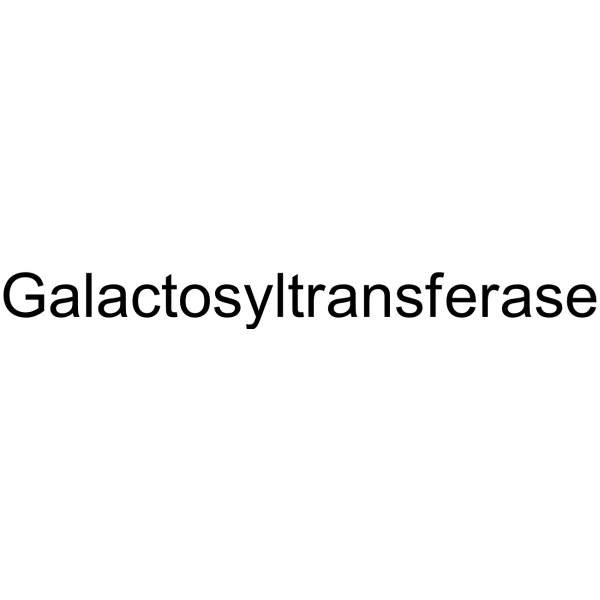Galactosyltransferase, from bovine milk

Galactosyltransferase, from bovine milk structure
|
Common Name | Galactosyltransferase, from bovine milk | ||
|---|---|---|---|---|
| CAS Number | 9031-68-9 | Molecular Weight | N/A | |
| Density | N/A | Boiling Point | N/A | |
| Molecular Formula | N/A | Melting Point | N/A | |
| MSDS | USA | Flash Point | N/A | |
|
Complete sequencing and characterization of 21,243 full-length human cDNAs.
Nat. Genet. 36 , 40-5, (2004) As a base for human transcriptome and functional genomics, we created the "full-length long Japan" (FLJ) collection of sequenced human cDNAs. We determined the entire sequence of 21,243 selected clones and found that 14,490 cDNAs (10,897 clusters) were unique... |
|
|
The status, quality, and expansion of the NIH full-length cDNA project: the Mammalian Gene Collection (MGC).
Genome Res. 14 , 2121-7, (2004) The National Institutes of Health's Mammalian Gene Collection (MGC) project was designed to generate and sequence a publicly accessible cDNA resource containing a complete open reading frame (ORF) for every human and mouse gene. The project initially used a r... |
|
|
Quantitative phosphoproteomics reveals widespread full phosphorylation site occupancy during mitosis.
Sci. Signal. 3(104) , ra3, (2010) Eukaryotic cells replicate by a complex series of evolutionarily conserved events that are tightly regulated at defined stages of the cell division cycle. Progression through this cycle involves a large number of dedicated protein complexes and signaling path... |
|
|
The DNA sequence and biological annotation of human chromosome 1.
Nature 441 , 315-321, (2006) The reference sequence for each human chromosome provides the framework for understanding genome function, variation and evolution. Here we report the finished sequence and biological annotation of human chromosome 1. Chromosome 1 is gene-dense, with 3,141 ge... |
|
|
DNA sequence and analysis of human chromosome 9.
Nature 429(6990) , 369-74, (2004) Chromosome 9 is highly structurally polymorphic. It contains the largest autosomal block of heterochromatin, which is heteromorphic in 6-8% of humans, whereas pericentric inversions occur in more than 1% of the population. The finished euchromatic sequence of... |
|
|
The full-ORF clone resource of the German cDNA Consortium.
BMC Genomics 8 , 399, (2007) With the completion of the human genome sequence the functional analysis and characterization of the encoded proteins has become the next urging challenge in the post-genome era. The lack of comprehensive ORFeome resources has thus far hampered systematic app... |
|
|
Isolation of galactosyltransferase from human milk and the determination of its N-terminal amino acid sequence.
Biochem. Biophys. Res. Commun. 138(1) , 224-9, (1986) Galactosyltransferase (EC 2.4.1.22), purified to homogeneity from human milk by affinity chromatography, had an apparent molecular weight of 53,000 as determined by denaturing polyacrylamide gel electrophoresis. Subtraction of the estimated contribution of th... |
|
|
Use of site-directed mutagenesis to identify the galactosyltransferase binding sites for UDP-galactose.
Biochem. Biophys. Res. Commun. 206(1) , 362-9, (1995) Site-directed mutagenesis was utilized to identify binding sites for UDP-galactose in galactosyltransferase (EC 2.4.1.22). Mutant cDNAs were generated by a procedure based on PCR, and the mutated enzymes were expressed in E.coli cells. The mutant enzymes were... |
|
|
Mammary sensitivity to protein restriction and re-alimentation.
Br. J. Nutr. 76(3) , 423-34, (1996) The present study tested the influence of protein undernutrition and re-alimentation on mammary gland size and secretory cell activity in lactating rats. During gestation, female Sprague-Dawley rats were offered a high-protein diet (215 g crude protein (N x 6... |
|
|
Analysis of the sequences of human beta-1,4-galactosyltransferase cDNA clones.
Int. J. Biochem. Cell Biol. 27(3) , 329-36, (1995) UDP-galactose:beta-1,4 N-acetyl glucosamine galactosyltransferase (4 beta GT) is a promising tumor marker for ovarian cancer. To study the role of 4 beta GT in malignant transformation at the molecular level human 4 beta GT cDNA and genomic clones were isolat... |